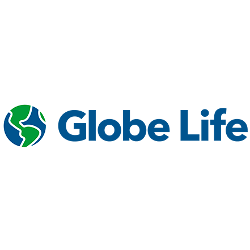
Empower your campaign with seamless fundraising tools designed to connect with supporters effectively. From strategic outreach to donation tracking, our solutions simplify the fundraising process, allowing you to focus on what matters most—your mission. Start reaching more supporters and amplifying your impact today.
Campaign fundraising has always been a cornerstone of political campaigns, with candidates seeking to attract supporters and raise funds to fuel their campaigns. In the rapidly evolving world of technology, innovative ideas in political fundraising are more critical than ever. One such idea that has proven highly effective is political voice broadcasting. In this blog post, we'll dive into how voice broadcasting works, and explore some creative fundraising ideas utilizing this powerful tool.
Voice broadcasting is a mass communication technique that allows you to send recorded voice messages to thousands of recipients simultaneously. The process is simple and streamlined, involving these five steps:
Set Your Caller ID: Choose the phone number that will appear on recipients' phones when they receive the call. This can be your campaign headquarters' phone number or a dedicated number for fundraising efforts.
Create Your Recording: Craft a compelling message that will resonate with your target audience. This could be an invitation to a fundraising event, a request for donations, or an update on your campaign's progress.
Upload Your Phone List: Import a list of phone numbers you want to reach with your voice broadcast. This can include existing supporters, potential donors, or even registered voters in your district.
Schedule Your Calls: Decide when you want your voice broadcasts to be sent, and schedule them accordingly. You can choose to send calls immediately or schedule them for a future date and time, allowing for maximum flexibility.
View Your Call Reports: Track the success of your voice broadcasts with detailed reports that show call statistics, such as the number of calls answered, voicemail messages left, and more. These insights can help you optimize your campaign strategy.
Now that you understand how mass calling works, let's explore some creative fundraising ideas that can benefit from this powerful tool.
Virtual Town Hall Meetings: Invite supporters and potential donors to a virtual town hall meeting using voice broadcasting. Share updates about your campaign, discuss key issues, and provide information on how to donate.
Personalized Donor Thank You Messages: Record personalized thank you messages for your donors, expressing your gratitude for their contributions. This personal touch can strengthen your relationship with your supporters and encourage future donations.
Urgent Fundraising Appeals: When your campaign is approaching a critical deadline or milestone, use voice broadcasting to send urgent fundraising appeals. This can create a sense of urgency and motivate your supporters to contribute.
Event Invitations: Use voice broadcasting to invite supporters to fundraising events, such as dinners, auctions, or rallies. This can increase event attendance and, consequently, the funds raised.
Voter Surveys: Use voice broadcasting to conduct voter surveys and gather feedback on key issues. In addition to valuable insights, this can provide an opportunity to ask for donations from those who express support for your campaign.
Voice broadcasting is an invaluable tool for political campaigns, offering an efficient and cost-effective way to communicate with supporters and potential donors. By leveraging this technology, you can enhance your campaign fundraising efforts and secure the resources necessary to run a successful campaign. So, get started today and revolutionize your campaign fundraising with voice broadcasting!
Read what our satisfied customers have to say about Sigma Voice. Discover how our advanced communication solutions have transformed their business operations and customer interactions.
Tom was awesome! He spent time on the phone helping me get set up. Great intro by Tom to my new voice blast service! Wish I c...
Sigma was very helpful in our company meeting a call documentation requirement for a Federal regulation. Tom gave us great se...
Sigma Voice has allowed our organization to disseminate information quickly, thoroughly and to a wide audience. The software ...
This is the first time I used this company and am extremely pleased with the excellence in customer service. There was no nee...
This service is fantastic. Setting up automated calls is super easy and affordable. I highly recommend it.
Sigma Voice was so easy to set up. I needed to get an immediate message out to my 60+ family members. I sent a sign up messag...

Globe Life is a leading insurance provider known for its trusted coverage and excellent customer service.

Harvard University, one of the world's most prestigious institutions, trusted our solutions for communication excellence.

Sears has relied on innovative solutions to improve its customer outreach and retail operations.

The largest industrial union in North America trusts us for seamless communication solutions.

UNITE HERE connects workers across the U.S. with our dependable communication systems.

The American Red Cross depends on us to deliver messages during critical missions and emergencies.
Experience the benefits of Sigma Voice's advanced communication solutions, including IVR, SMS broadcasting, voice broadcasting, and telecom auditing. Sign up today to enhance your customer interactions, streamline your business processes, and optimize your telecom expenses with expert auditing services.
Prefer to talk right away? Call us at (800) 905-9140.
